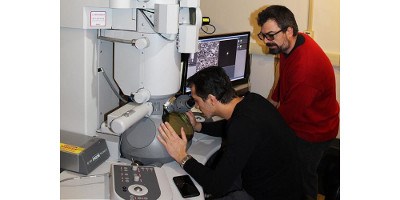Researchers at Los Alamos National Laboratory recently developed a new tungsten-based alloy that can resist exceptional amounts of radiation without any damage. Important for harsh irradiation environments like the interiors of magnetic fusion reactors, earlier explored materials have till now been hobbled by vulnerability against fracture, but this newly developed alloy appears to overcome that problem.
This material showed outstanding radiation resistance when compared to pure nanocrystalline tungsten materials and other conventional alloys. Our investigations of the material mechanical properties under different stress states and response of the material under plasma exposure are on-going.
Osman El Atwani, Study Lead Author, Los Alamos National Laboratory said: âIt seems that we have developed a material with unprecedented radiation resistance. We have never seen before a material that can withstand the level of radiation damage that we have observed for this high-entropy [four or more principal elements] alloy. It seems to retain outstanding mechanical properties after irradiation, as opposed to traditional counterparts, in which the mechanical properties degrade easily under irradiation.â?
Enrique Martinez Saez, Study Co-Author, Principal Investigator, Los Alamos National Laboratory said: âAtom probe tomography revealed an interesting atomic level layering of different elements in these alloys, which then changed to nanoclusters when subjected to radiation, helping us to better understand why this unique alloy is highly radiation tolerant.â?
Arun Devaraj, Project Collaborator, Materials Scientist, Pacific Northwest National Laboratory said: âProduced as a thin film, this material is a quaternary nanocrystalline tungsten-tantalum-vanadium-chromium alloy that has been characterized under harsh thermal conditions and following irradiation. We havenât yet tested it in high-corrosion environments. But I anticipate it should perform well there also. And if it is ductile, as expected, it could also be used as turbine material since it is a refractory, high-melting-point material.â?


